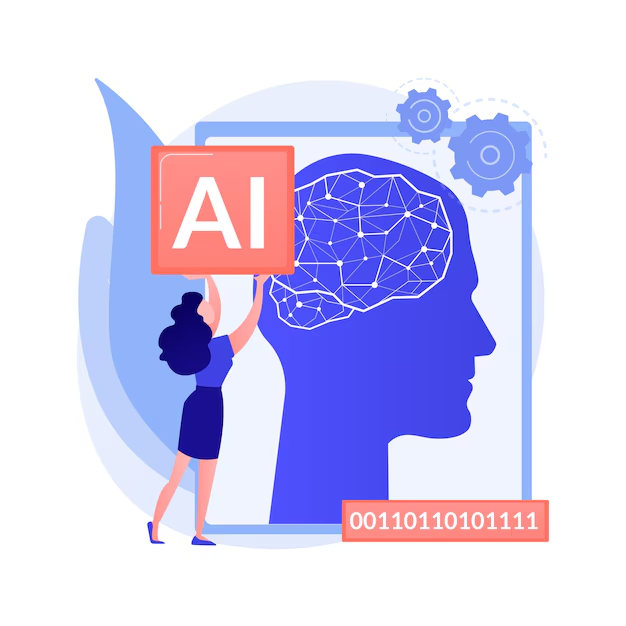
Introduction to Artificial Intelligence Basics
Artificial Intelligence Basics are essential to learn in today’s digital world. Artificial Intelligence (AI) refers to computer systems designed to perform tasks that normally require human intelligence. These tasks include understanding natural language, recognizing images, solving problems, making predictions, and even making decisions.
Artificial Intelligence Basics are not just futuristic theories. AI is already all around us powering apps, smartphones, websites, and smart devices. From recommending movies on Netflix to assisting doctors in detecting diseases, AI works silently in the background to make life easier. By mastering Artificial Intelligence Basics today, you can prepare for a future where AI plays an even greater role in shaping how we live, work, and interact.
The History of Artificial Intelligence Basics
The story of Artificial Intelligence Basics begins in the mid-20th century. In the 1950s, pioneers such as Alan Turing asked whether machines could “think.” His famous Turing Test became a foundation for AI research. Early systems in the 1960s and 1970s were rule-based, capable of solving simple problems but lacking flexibility.
By the 1980s, researchers explored expert systems that used stored knowledge to make decisions. However, these systems required constant updates and could not adapt on their own. The real breakthrough came with the rise of machine learning and later deep learning in the 2000s. These approaches allowed computers to learn from data, recognize patterns, and improve performance without being explicitly programmed.
Today, Artificial Intelligence Basics include concepts such as natural language processing (NLP), computer vision, neural networks, and predictive analytics. AI has moved from academic labs to real-world applications that billions of people use daily.
👉 For a detailed timeline, check Stanford’s AI History.
Everyday Applications of Artificial Intelligence Basics
Artificial Intelligence Basics are easier to understand when you look at how AI is applied in everyday life. Here are some common examples:
-
Facial recognition used to unlock smartphones securely
-
Email spam filters that protect your inbox from unwanted messages
-
Personalized recommendations on Netflix, YouTube, or Amazon
-
Voice assistants like Siri, Alexa, and Google Assistant
-
AI in healthcare for early detection of cancer, diabetes, and other diseases
-
Customer service chatbots that answer questions 24/7
-
Navigation apps like Google Maps that suggest the fastest routes
-
Financial fraud detection in online banking and credit cards
These applications demonstrate how Artificial Intelligence Basics help improve efficiency, save time, and deliver accurate results.
Why Artificial Intelligence Basics Matter for the Future
Artificial Intelligence Basics matter because AI is not just a convenience it’s a force that will reshape industries, economies, and societies.
-
Business: AI helps companies predict customer needs, analyse markets, and make smarter decisions. Retailers use AI for inventory management and personalized shopping experiences.
-
Healthcare: Doctors rely on AI for early disease detection, image analysis, and personalized treatment recommendations.
-
Education: Teachers use AI-powered tools to track student progress and deliver customized lessons.
-
Agriculture: AI-powered drones and sensors help farmers optimize irrigation, detect crop diseases, and improve yields.
-
Transportation: Self-driving cars and AI-based traffic systems promise safer and more efficient travel.
By understanding Artificial Intelligence Basics, individuals and organizations can prepare to adapt and thrive in a rapidly changing world.
Challenges and Ethical Issues in Artificial Intelligence Basics
While Artificial Intelligence Basics offer great benefits, they also raise important challenges:
-
Job displacement: As automation grows, some traditional jobs may disappear, requiring workers to reskill.
-
Bias in AI: If the data used to train AI is biased, the system may produce unfair or inaccurate results.
-
Privacy concerns: AI often relies on personal data, which raises concerns about how that data is collected and used.
-
Ethical decision-making: AI systems used in law enforcement, healthcare, or finance must make decisions that affect people’s lives, which brings up questions of fairness and accountability.
Understanding these challenges is a key part of mastering Artificial Intelligence Basics, ensuring that AI is developed and used responsibly.
Conclusion: Why You Should Learn Artificial Intelligence Basics
Artificial Intelligence Basics are no longer optional knowledge. From chatbots and voice assistants to advanced medical tools and self-driving cars, AI already influences how we live, work, and learn.
By mastering Artificial Intelligence Basics today, you’ll not only be prepared for tomorrow’s AI-driven future but also be equipped to take advantage of new opportunities in technology, business, and society. The future belongs to those who understand AI and learning Artificial Intelligence Basics is the first step.


[…] 👉 For a detailed beginner’s overview, check our Introduction to Artificial Intelligence Basics. […]
[…] If you’re completely new, check out our Introduction to Artificial Intelligence Basics […]